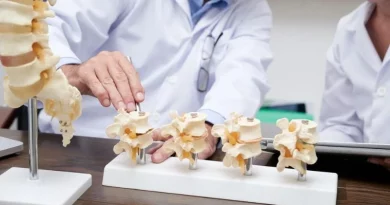Tips and Tricks for Installing 1/4 Tubing Compression Fittings
Last updated on February 18th, 2024 at 09:49 pm
Installing 1/4 tubing compression fittings is vital to plumbing projects, demanding precision and expertise. Whether you’re an avid Do-It-Yourself fan or a first-timer in handling a pipe project, knowing the best practices at pressure fittings is significant.
In this guide, we’ll dig into fundamental tips and tricks to guarantee an effective installation process.
Understanding Compression Fittings
Before plunging into the establishment cycle, getting a handle on the basics of pressure fittings is vital. These fittings are generally used in plumbing applications to associate two bits of tubing or line safely.
They comprise three primary parts: a pressure nut, a pressure ring (otherwise called a ferrule), and the fitting body. When gathered accurately, pressure fittings make a tight seal, forestalling releases and guaranteeing an effective liquid stream.
Essential Tools and Materials
To start your installation process, accumulate the vital devices and materials. Here is an agenda to ensure you’re entirely ready:
- 1/4 Tube: Choose the right tube for your application, and ensure it fits the compression fitting.
- Compression fittings: Buy good quality fittings in the correct size, including nuts, ferrules, and body.
- Pipe cutter or hacksaw: Use a reliable cutting tool to get clean, precise cuts.
- Deburring Tool: Remove rough edges or burrs from the tube to ensure a good seal.
- Wrenches: Keep an adjustable or open-end wrench handy to tighten fasteners properly.
- Thread Sealant: Depending on your application, you may need thread sealant to prevent leaks.
- Oil: Applying oil to the fabric makes assembly easier and ensures a perfect seal.
Step-by-Step Installation Process
Follow these step-by-step instructions to install 1/4 tubing compression fittings effectively:
1. Measure and Cut the Tubing
Utilizing a tubing shaper or hacksaw, painstakingly slice the tubing to the ideal length. It’s essential to accomplish clean slices with next to no burrs to guarantee a legitimate seal and forestall spills. Exact estimation is fundamental to avoid wastage and ensure the tubing fits impeccably into the ideal area.
2. Deburr the Ends
In the wake of cutting the tubing, assess the finishes for any harsh edges or burrs. Use a deburring instrument to eliminate these blemishes, making smooth and clean edges. This step is fundamental to forestall harm to the pressure-fitting parts and guarantee a protected association.
3. Prepare the Compression Fitting
Before embedding the tubing, set up the pressure fitting by sliding the pressure nut and ferrule onto the tubing. Guarantee that the ferrule’s tightened end faces toward the fitting body, which is pivotal for making a tight seal.
4. Insert the Tubing
Cautiously embed the pre-arranged tubing into the fitting body until it arrives at the cylinder stop. It’s essential to embed the tubing straight and equitably to forestall misalignment, which could prompt breaks or diminished stream. Guarantee the tubing is situated immovably against the cylinder stop to ensure a protected association.
5. Tighten the Compression Nut
When the tubing is embedded, use wrenches to fix the pressure nut clockwise until cozy. Abstain from over-fixing, as this could harm the fitting or tubing. An overall principle is to fix the nut until it’s tight and afterward give it a quarter go to guarantee a safe seal.
6. Check for Leaks

When the 1/4 tubing pressure fitting is safely set up, now is the ideal time to release the stream! Turn on the water supply and witness your pipes project become fully awake.
Assuming that bothersome breaks show up, dread not! A delicate change of the pressure nut will quickly stop them. Remember that accuracy is central – try not to over-fix to keep up with the trustworthiness of your fittings and parts.
Furthermore, when looking for top-quality 1/4 tubing compression fittings, trust 4LifetimeLines. With devotion to solidness and dependability, you can have confidence that your pipes framework is totally solid.
Pro Tips and Tricks
For a flawless installation, professional advice is essential. Let’s review these important features.
- Lubricate: Apply lubricant to the cloth to aid adhesion and ensure a strong seal.
- Avoid overtightening: Turn the nut until it pops, then give it 15 minutes to secure the joint.
- Inspect for damage: Before installation, inspect the fabric for damage or wear and replace any damaged items.
- Consider a thread cover: Use a thread cover if necessary to prevent leakage, following the manufacturer’s recommendations.
Troubleshooting Common Issues
It is not uncommon to encounter difficulties during the installation process. However, solving everyday problems can save you time and frustration. Let’s dive into these solutions to ensure a seamless installation experience.
- Storage: If the leak continues, stock up on supplies, check equipment for damage, and reassemble to ensure proper packaging and labeling.
- Tight assembly: Lubricate and secure the tube ends so they are clean and free of damage to facilitate assembly.
- Improper Tubing: Double-check the tubing arrangement in the fitting to prevent leaks and ensure proper flow.
Mastering the Art of Compression Fittings
Mastering the installation of 1/4 tubing pressure fittings is fundamental for Do-It-Yourself fans and experts. You can accomplish a safe and release-free association by figuring out the fundamentals, gathering necessary instruments and materials, and following a precise establishment process.
Use genius tips and tricks, like using lubricants and avoiding over-fixing, to smooth out the establishment interaction and guarantee ideal execution. With these experiences and investigating systems available, you’re exceptional at handling any pipe project with certainty and accuracy.




